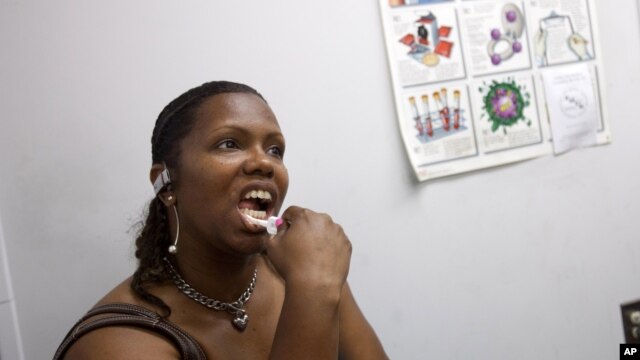The harshest challenge came from his very church, when he told leaders in 1999 that he was HIV positive. "I know what it is like to be stigmatized," he said on the sidelines of the International AIDS Conference in Durban. His status may have prevented him from getting a parish, Sandewa says. But when he was shunned, he looked to his faith and turned the other cheek. "The teaching of Jesus Christ is about love," he said. "So when I see others stigmatizing me, I know they are not walking the talk, because they are preaching the love, but then they are not implementing the love. So that's how I gathered confidence and said, I have to teach them, I decided to teach them about that. When they stigmatized me, I said no, I have to help them."
Pressing for tolerance, compassion
Sandewa is one of several dozen religious leaders who took an unlikely spot here at the 21st annual conference, saying there is room for faith in the fight against the virus. Clergy held regular interfaith sessions. The journey to reconcile faith and HIV hasn't been easy. For example, critics say the Roman Catholic Church has marginalized millions of people who need help and acceptance. In doing so, critics argue, the Church has denied vulnerable people the social and material support they need to fight HIV.

Civil rights activists march at the start of the 21st International AIDS Conference in Durban, South Africa, July 18, 2016. Some clerics seek a less judgmental approach in battling the epidemic, which often afflicts people who are gay.
Caroline Jaff, a medical doctor and Catholic nun in Cameroon, summed up the Church's position on two controversial topics in the fight against AIDS. "We preach fidelity, which is 100 percent HIV prevention," she said. "About homosexuality, you know, actually, it's not a matter of judgement, but since the Church goes along with what the Scripture says, let me just say, it has created man and woman." Other Christian leaders say such attitudes are not helpful. The Reverend J.P. Mokgethi-Heath, who toted around a bag full of condoms and spoke lovingly about his husband, said religious institutions need to be more accepting of people and of sex.
A policy adviser on HIV and theology for the Church of Sweden, he said houses of worship need to be involved in the fight against HIV. "Faith is integral to all our lives, and what faith gives each of us is the knowledge that we are beautifully and divinely created, that each of us is not only a creation, but a celebration of God," he said. "And so our main role, I would say, is not only to link people to God in relationship, but to give people the self-esteem they need to believe themselves worthy of protection, believe themselves worthy of treatment, believe themselves worthy of care."
Faith and science compatible


 The Science, Health, and Technology Room
The Science, Health, and Technology Room


 Reply With Quote
Reply With Quote









